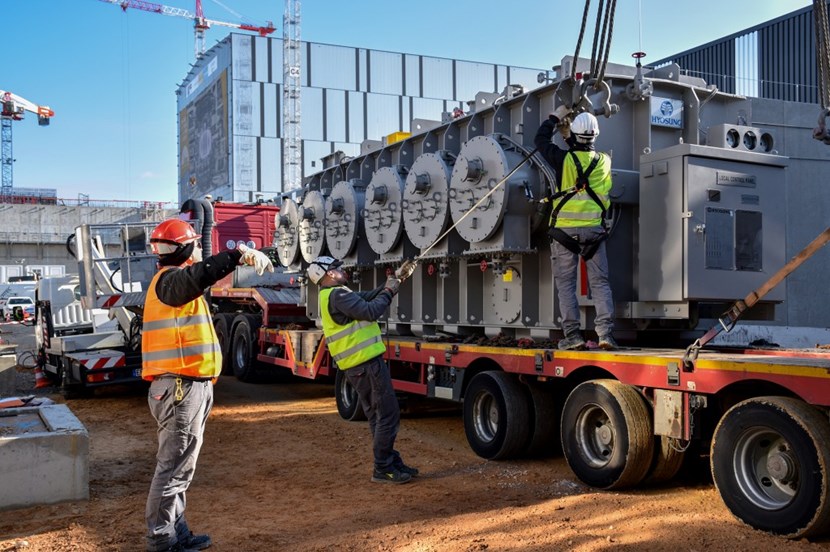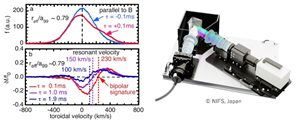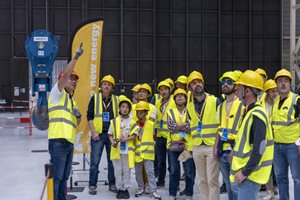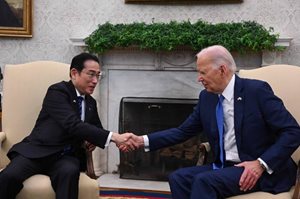ITER NEWSLINE
-
Electricity supply
Power to the magnets
K.H.
Electricity supply | Power to the magnets
The 50-tonne box-shaped transformer hovers about a metre and a half above ground. In a carefully calculated procedure, a crane moves the device to its final destination—a concrete slab just outside one of the two Magnet Power Conversion buildings.

This transformer is the first of 18 to be delivered by Korea. It is part of equipment being installed at the Magnet Power Conversion buildings to convert electricity to the specific configuration of voltage and current needed by the ITER magnets.
Two days later, a second transformer is positioned on the opposite side of the building—this one weighing 20 tonnes.
These are the first two transformers to be delivered out of a set of 18 procured by Korea from the company Hyosung. They will be integrated into a complex arrangement of equipment dedicated to converting the power supplied by the French grid to the voltage required for the operation of ITER's magnet system.
The magnets will run on electricity with a specific configuration of low voltage and high current. In a sequence of two steps the voltage is first converted from 400 kV to 66 or 22 kV, and then to the voltage level required by the corresponding converters. For the larger transformer installed last week it will be approximately 1kV; for the smaller, the voltage required is 0.327 kV.
The newly positioned transformers will come into action in the second step. The 20-tonne transformer will ensure electricity supply to the correction coils that will be inserted between the poloidal and toroidal field coils, while the 50-tonne transformer is linked to the plasma vertical stabilization circuit.
Both the correction coils and the vertical stabilization coils will fine-tune the plasma inside the vacuum chamber.
In a later step, the transformers outside the Magnet Power Conversion buildings will be linked to converter bridges or rectifiers on the inside. They function like adapters, converting the alternating current (AC) to direct current (DC) before it is fed into the tokamak to power the
magnets.
In April, the next four transformers will arrive from Korea; by May 2019, all Korean-produced transformers will be installed. Together with transformers procured
by China, there will be 32 converter units to supply the ITER magnet system.
return to the latest published articles







